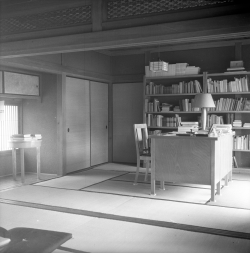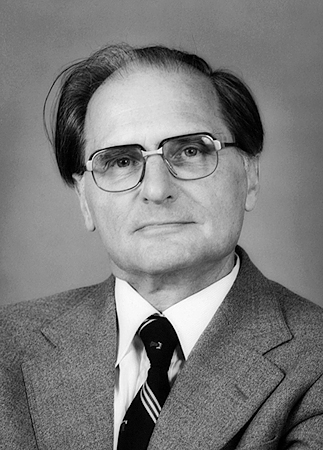110 years of East Asian art historian Dietrich Seckel

On August 6, 2020, the historian of East Asian art history, Dietrich Seckel would have turned 110 years.
After finishing his PhD in German literature with a minor in European art history at the Friedrich Wilhelm University (today: Humboldt University) of Berlin, the young Dietrich Seckel travelled to Japan in 1936 to teach German language and literature as a lecturer. He worked at several Japanese highschools and the Imperial University in Tokyo. In long letters to his mother, he documents his experiences in the Japanese education system as well as his everyday life in a culture and environment, that was utterly new to him. This collection of personal impressions was edited and carefully annotated by historian Hans-Joachim Bieber and recently published in the volume, Dietrich Seckel: Berichte aus Japan: Briefe an seine Mutter, Hiroshima 1936 bis Tokyo/Urawa 1941 (Reports from Japan: Letters to his mother: Hiroshima 1936 to Tokyo/Urawa 1941) (Munich: Iudicium, 2020).
Seckel discovers his passion for Japanese art and began to write his first articles on Japanese architecture and its cultural background.
During his frequent travels, his camera was a faithful companion. The result was a large number of black-and-white photographs that document his life and art historical interests in Japan, as well as his cultural encounters. The Institute of East Asian Art History digitized his photographs in 2015, and made them accessible to the public. In her master thesis Japan durch die Augen eines deutschen Kunsthistorikers gesehen: Die Fotografien von Dietrich Seckel, 1936-1942 (Japan seen through the eyes of a German art historian: The photographs by Dietrich Seckel, 1936-1942) (Heidelberg 2016), Anne-Laure Bodin analyzed the black-and-white photos in the context of their creation and assessed their significance for the discipline of art history.
After his return to Germany in 1946, Seckel submitted his second PhD thesis (Habilitation) in East Asian art history two years later. Immediately afterwards, he was appointed a “Privatdozent” (a qualification to teach as full professor) at the Institute of Art History, Heidelberg University. In 1965, he was finally appointed as a full professor. His teaching position was the foundation for the institutional establishment of East Asian art history as an independent academic subject in Germany.
Seckel founded the Department of East Asian Art History in 1957 and headed it until his retirement in 1976. At that time, Heidelberg was the only university in Germany offering specialized training and research in East Asian art history.

His publications on Buddhist art in East Asia as well as the standard works Einführung in die Kunst Ostasiens (Introduction to the Art of East Asia, Munich, 1960) and Das Porträt in Ostasien (The Portrait in East Asia, 3 vols, Heidelberg, 1997-1999), Seckel shaped the field significantly. Always in line with his interests and curiosity, he developed new areas of investigation with great ambition and conscientiousness, and quickly enjoyed the reputation as a renowned scholar and supportive professor.
The Institute of East Asian Art History is proud to call such a unique personality its founding figure and looks with gratitude at his life's achievements as a brilliant researcher and generous scholar. The spirit of Seckel lives on in the Center for Asian and Transcultural Studies (CATS), watches over the institute in the physical form of his former travel case and inspires employees and students to work on innovative and thorough research and teaching.
Text: Susann Henker, Melanie Trede
Related Links
Remembrances
先生の愛用されていた机などのこと 思い出します。まだ図書室にあるのでしょうか。
だいぶ昔に 先生の 朝鮮絵画の特質 というご論文を日本語に訳したことが
ありました。一部 わからないことろあったので お手紙をさしあげました。
丁寧な返信をいただいたこと 思い出します。当時は手紙を送受信していたの です。
Das lässt mich an seinen geliebten Schreibtisch u.a.m. denken. Ob dieser wohl noch in der Bibliothek ist?
Vor geraumer Zeit habe ich einen Aufsatz von ihm über Besonderheiten der koreanischen Malerei ins Japanische übersetzt. Dabei verstand ich eine Stelle nicht und schrieb ihm einen Brief. Ich erinnere mich, dass er sehr freundlich und genau geantwortet hat. Damals haben wir noch Briefe geschrieben.
Michio Yonekura (Sophia University, Tokyo)
2nd Ishibashi Foundation Visiting Professor at IKO (winter semester 2005/06)
I think of my days in Heidelberg, especially a brief friendship I enjoyed with Professor Seckel. He had earlier a connection with the school I had attended in Tokyo. My German teacher at the Seikei University in Kichijoji, was Professor Seckel’s first student at Tōdai (University of Tokyo).
Yoshiaki Shimizu (Princeton University)
former Visiting Professor at IKO (summer semester 1992)
Auch ich werde ihn immer in sehr guter Erinnerung behalten. Ich habe ja damals drei Oral-History Termine losgetreten, an denen Studenten ihn über seine Zeit in Japan interviewt haben, was sehr beeindruckend war. Und am Tag der Abgabe meiner M.A.-Arbeit im Jahr 2006 war ich natürlich mal wieder viel zu spät dran und stand schwitzend im Copy-Shop in der Sandgasse in der Schlange und vor mir war Herr Seckel. Er flirtete unverblümt im zarten Alter von 96 mit den auch schon nicht ganz unbetagten Damen am Counter, die ihn wohl schon seit Dekaden kannten, und antwortete auf die initiale Frage hin, wie es ihm gehe: "unverschämt gut". Haha. Toll, dass seine Fotos digitalisiert wurden und dass dieser Band mit seinen Briefen nun erschienen ist.
Jan Schmidt (Katholieke Universiteit Leuven)


